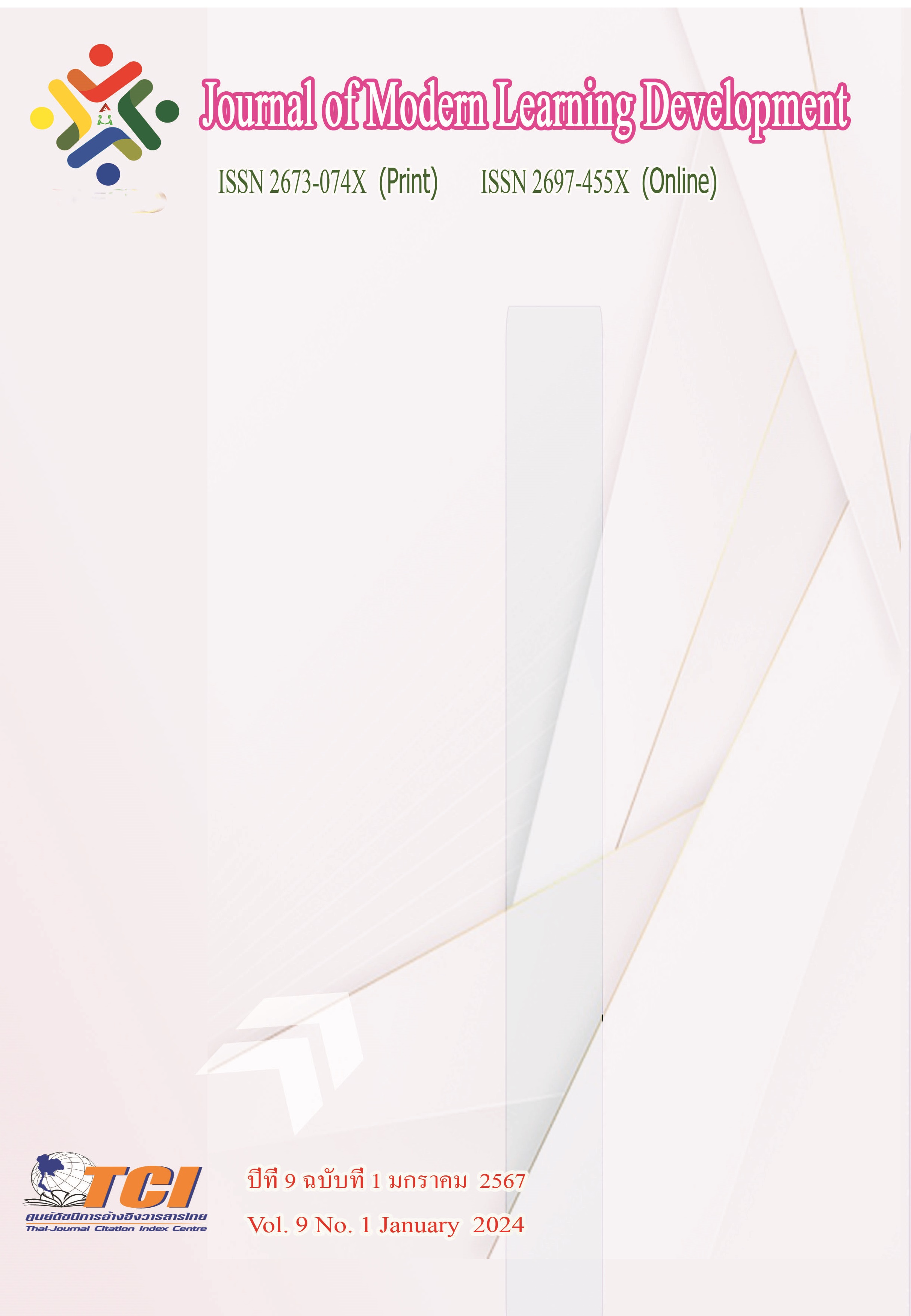The Research on the Impact of Big Data Capabilities on Innovation Performance of Platform Enterprises
Main Article Content
Abstract
The objectives of this research were: (1)To analyze the process and mechanism of the impact of big data capabilities on the innovation performance of platform enterprises.(2)To analyze the mediating effect of knowledge governance between big data capabilities and platform enterprise innovation performance.(3)To analyze the moderating effect of environmental volatility on the relationship between big data capabilities and platform enterprise innovation performance. This study takes platform enterprises as the research object and uses a questionnaire survey method to collect data. This study analyzed the data by using statistical software such as SPSS and applying methods such as reliability testing, validity testing, and multilevel regression analysis.
The results found that: (1)Big data capabilities have a significant positive impact on the innovation performance of platform enterprises.(2)Knowledge governance plays a partial intermediary role between big data capabilities and platform enterprise innovation performance.(3)Environmental volatility negatively regulates the relationship between big data capabilities and platform enterprise innovation performance.
Article Details
References
Boryana V. Dimitrova, Brent Smith & Trina Larsen Andras (2020) Marketing channel evolution: From contactual efficiency to brand value co-creation and appropriation within the platform enterprise, Journal of Marketing Channels, 26:1, 60-71.
Enkel, E, S Heil, M Hengstler and H Wirth (2017). Exploratory and exploitative innovation: To what extent do the dimensions of individual level absorptive capacity contribute? Technovation, 60, 29–38.
Akter, S, SF Wamba, A Gunasekaran, R Dubey and SJ Childe (2016).How to improve firm performance using big data analytics capability and business strategy alignment? International Journal of Production Economics, 182, 113–131.
Chen, M, S Mao and Y Liu (2014). Big data: A survey. Mobile Networks and Applications, 19 (2), 171–209.
Alharthi, A, V Krotov and M Bowman (2017). Addressing barriers to big data. Business Horizons, 60 (3), 285–292.
Davenport, HT (2014). How strategists use “big data” to support internal business decisions, discovery and production. Strategy & Leadership, 42 (4), 45–50.
Erevelles, S, N Fukawa and L Swayne (2016). Big Data consumer analytics and the transformation of marketing. Journal of Business Research, 69 (2), 897–904.
Gunasekaran, A, M Kumar Tiwari, R Dubey and S Fosso Wamba (2016). Big data and predictive analytics applications in supply chain management. Computers and Industrial Engineering, 101(C), 525–527.
Alavi, M., & Leidner, D. E. (2001). Review: Knowledge Management and knowledge management systems: Conceptual foundations and research issues. MIS Quarterly, 25, 107–136.
Chatzoudes, D., Chatzoglou, P., & Vraimaki, E. (2015). The central role of knowledge management in business operations: Developing a new conceptual framework. Business Process Management Journal, 21(5), 1117–1139.
Arias-Pérez, J, J Velez-Ocampo and J Cepeda-Cardona (2021). Strategic orientation toward digitalisation to improve innovation capability: Why knowledge acquisition and exploitation through external embeddedness matter. Journal of Knowledge Management, 25(5), 1319–1335.
Chichkanov, N (2021). The role of client knowledge absorptive capacity for innovation in KIBS. Journal of Knowledge Management, 25(5), 1194–1218.
Cerne, M., Nerstad, C. G. L., Dysvik, A., & Skerlavaj, M. (2014). What goes around comes around: Knowledge hiding, perceived motivational climate, and creativity. Academy of Management Journal, 57(1), 172–192.
Carlucci, D., & Schiuma, G. (2006). Knowledge asset value spiral: Linking knowledge assets to company’s performance. Knowledge and Process Management, 13(1), 35–46.
Coras, E. L., & Tantau, A. D. (2013). A risk mitigation model in SME´s open innovation projects. Management & Marketing Challenges for the Knowledge Society, 8(2), 303–328.
Holten, A. L., Hancock, G. R., Persson, R., Hansen, Å. M., & Hogh, A. (2016). Knowledge hoarding: Antecedent or consequent of negative acts? The mediating role of trust and justice. Journal of Knowledge Management, 20(2), 215–229.
Agostini, L, A Nosella, R Sarala, J-C Spender and D Wegner (2020). Tracing the evolution of the literature on knowledge management in inter-organisational contexts: A bibliometric analysis. Journal of Knowledge Management. Vol. 24 No. 2, pp. 463–490.
Gupta, M., & George, J. F. (2016). Toward the development of a big data analytics capability. Information & Management, 53(8), 1049-1064.
Lin, C., & Kunnathur, A. (2019). Strategic orientations, developmental culture, and big data capability. Journal of Business Research, 105, 49-60.
Wang, Y., Kung, L., & Byrd, T. A. (2018). Big data analytics: Understanding its capabilities and potential benefits for healthcare organizations. Technological forecasting and social change, 126, 3-13.
Horng, J. S., Liu, C. H., Chou, S. F., Yu, T. Y., & Hu, D. C. (2022). Role of big data capabilities in enhancing competitive advantage and performance in the hospitality sector: Knowledge-based dynamic capabilities view. Journal of Hospitality and Tourism Management, 51, 22-38.
Bodlaj, M and B Čater (2019). The impact of environmental turbulence on the perceived importance of innovation and innovativeness in SMEs. Journal of Small Business Management, 57(2), 417–435.
Nisar, Q. A., Nasir, N., Jamshed, S., Naz, S., Ali, M., & Ali, S. (2021). Big data management and environmental performance: role of big data decision-making capabilities and decision-making quality. Journal of Enterprise Information


